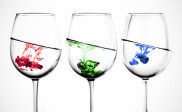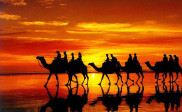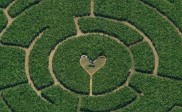Photographing Toys Using a DIY Light Tent
You will see through this article how it can be really simple to take good toy photos using a DIY light tent, without owning sophisticated lighting equipment. You can get amazing results through the use of a Light tent made of a cardboard box and some white paper. The light sources will be two desk lamps. I used my DSLR for the taking the shots in this article, but you should be able to get great results even with a point and shoot, all you need is a camera capable of taking macro photos, some toys, and a lot of creative thinking.
DIY Light Tent
The light tent is the most important element, in getting beautiful diffused light on your toys. Of course you can buy it for a cheap price, but where is the fun in that? You can get just about the same results from a home made cardboard light tent. You need to just get an empty cardboard box, a cutter, some white translucent paper and some glue or adhesive tape. First you need to cut out a rectangular or square shape from three sides of your box (you can do it for all the sides, but three are enough). After that, just take some white translucent paper and cover the now carved sides with it. It’s as simple as that. Now you can use another piece of paper (white or any other color) as a background by attaching it inside the box.
Lighting and shooting:

Place your DIY light tent on top of a table, and place two desk lamps on both sides of the box. The light will be diffused by the translucent paper and will not cast any harsh shadows on your subject. Once you have set your light sources, place the toy(s) you intend to photograph inside the box and set your camera on a tripod (Highly recommended to avoid camera shake). The next step, is to set your white balance, all cameras have white balance settings adequate for different light types ( incandescent , fluorescent…) but the best way to set it is through the custom mode (not in all cameras) which includes taking a reference photo of a white surface to tell the camera what to consider as white. The Following step is to determine the proper exposure and to set the aperture, shutter speed and ISO. Opt for the ISO value which won’t cause noise problems. If you are shooting using a DSLR you will have some freedom in setting the ISO value , but if you are using a compact camera try to keep it as low as possible (around ISO 200 or 400 should be fine). Try to set a small aperture to get a depth of field large enough to include every part of the toys you are using. Of course, you can use a wide aperture if you are seeking to produce a photo with a shallow depth of field. As for shutter speed, it doesn’t really matter if you use a tripod. But, if you are hand holding the camera, set a fast shutter speed in order to avoid blur produced by camera shape. Keep in mind that in order to avoid camera shake you need a shutter speed equal or faster than 1/focal length, i.e., if you are using a 100 mm lens, your shutter speed shouldn’t be slower than 1/100 s. After taking some sample shots and determining the exposure you will be using, you need to work on the very important elements of composition, Staging, and story telling. You can learn more about these elements in here . Also, try to vary the lighting from shot to shot, experiment with different settings. You can use one light source instead of two, you can change the distance between the light and the subject, or you can add another light source from the top. One of the merits of continuous lighting is that it allows you to instantly see the effect of the light on your subject. What you see is what you get, and that will make it easier for you to create stunning shots.
The final step, after shooting, is to post process your shots. You basically need to add a little bit of contrast and to adjust the color balance if you didn’t succeed in setting the camera white balance properly. You might also need to crop the photo, to make the subject more prominent, especially if you are using a point and shoot camera.
Once you are done you will get great toy photos, perfectly, shot, and without having to spend a lot of money on lighting equipment.

All photos by Yassine Hakimi
If you liked this article about using light tent in toy photography, don’t forget to add a comment in the section below.




nice
This is such a simple and obvious approach to making a light tent that I’m almost embarrassed for not having thought to try something similar! This is is a project I shall be attempting immediately! Thanks for posting this great idea!
This is great advice. Thank you. Can you also add something about lenses?